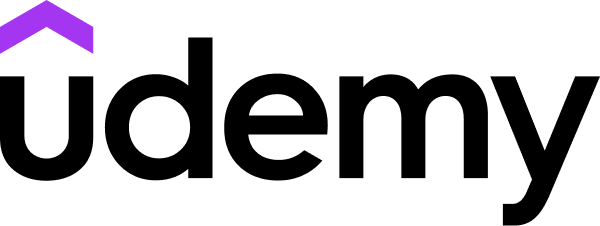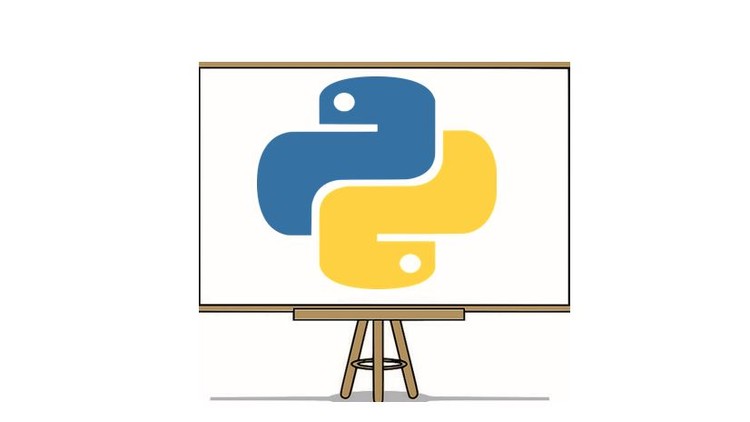Course overview
- Provider
- Udemy
- Course type
- Paid course
- Level
- All Levels
- Duration
- 18 hours
- Lessons
- 75 lessons
- Certificate
- Available on completion
- Course author
- Suresh M S
-
- Intent of this course is to convert even a programming noob to a professional python developer
- Intent of this course is to convert even a programming noob to a professional python developer
- Understand variables in Python along with its usage
- Get a thorough understanding of different Data Objects in Python
- Learn how to handle and operate text data in Python
- Get to know how well Python connects data both logically and conditionally
- Understand complete details of different data structures like List, Dictionaries, Tuples and Sets along with different operations using them
- Get hold of Loops in Python and learn how easy it is to work with them
- Create User Defined Functions and Lambda Functions in Python
- Understand and implement decorators
- Get the complete knowledge on Built-in Functions in Python
- Learn about variety of Exception Handling
- Get to know the details of Iterators and Generators
- Understand about collections
- Gain complete knowledge on Object oriented programming
- Implement all the learnt concepts by developing Applications and Games
Description
This course helps you becoming a Python Expert and get an in depth understanding of one of the most trending and in demand skill of 2020!
Go from a complete beginner to building Python Projects including Game Development with this course, This curriculum covers coding lectures having deep dive explanation to each of the concepts in Python
No need to wander around YouTube videos, documentation and random posts to find the information that you need to build your Python skills. This course gives you right set of information if you are beginner of programming or switching your programming journey from another language to Python.
This course will give you under the hood details of every concept that is spoken about in Python and sets your fundamentals in par with a professional python programmer.
If you are aiming to take up Automation of routine tasks with Python Scripting or get into web development or become a Data Scientist / Machine Learning & Deep Learning Engineer then you are at a very right place to start the journey by choosing to learn the tool that assists all the above operations.
Instead of giving you abstract details on How to work with Python at a surface level, i will take you through a ground up approach and provide complete details and deeper understanding on how and why of varied Python operations and functionalities along with best practices and pitfalls faced to let you become a Python expert via this course. High level list of topics that are covered in this course are mentioned below:
Understand how Python works Under the Hood
Behavior of Python Variables
Data Objects in Python - Numbers
Data Objects in Python - Text
Statements and Operators in Python
Data Structures in Python
Loops and Comprehension
Functions in Python – User defined Functions & Complete details and Implementation of Decorators
Functions in Python – Built-In Functions
Exception Handling in Python
Iterators and Generators in Python
Collections in Python
Object Oriented Programming in Python
Applications and Game Development
More Details on some of the topics that are covered in this course which are unique compared to conventional Python programming topics are described below:
Complete working style of Python- Along with the different components that python encounters during its execution
Does Python compile your code or interpret it or does both? In this section We will get this answer and realize how our software code gets executed on a physical(hardware) machine
Installing Python in your environment along with the required IDE’s to start coding.
We will get to know the best fit suite to run our Python code in this section
Python Variables – More than just a container to store the data and access the data as compared to other languages and reason behind its name of Dynamically Typed Program
Can we write: x = 100 followed by x = 'Hello world' in the same piece of software code? Yes, we can do it in Python. Then what about data type assignment to a variable? is it really needed here? We are going to understand and get the answer for each of our questions on variables in Python and get to know how easy it is to develop applications with them
Different Data objects available in Python – Numbers, Strings, Boolean, List, Tuple, Set, Dictionary
If you have ever thought of, in how many types could i ever store data in a Python program? you are going to get the answer here.
This section covers a lot of ground required for you to get skills of managing varied types of data in your program
Numbers- Complete details about Integer and Floating point numbers and ways to circumvent the surprising arithmetic’s of floating point numbers with a good introduction to Python Modules
Have you ever thought about the data type required to store the count of people in your family at home and data type required to store the count of Trees present in amazon rain forest?
Both are probably two extremes, isn't it? First case will mostly fall under 2 digits and second case may require atleast 12 digits to store.
How do we do it in Python? Do we require multiple data category or will one form of number suffice the need. We will get clarity on the same in this section.
What do you suggest the out come of below statement ?
0.1+0.2 == 0.3
Will it be TRUE or FALSE? Any body who is aware of general mathematics will definitely say it TRUE and its obvious that adding 0.1 and 0.2 constitutes to 0.3
Will Python behaves the same way? We will see some surprising mathematics , reasons behind them and ways to circumvent it in this section
Strings - Gain mastery over strings with different possible operations and see how they steal the pressure of coding!
How easy is it to get each character from your name and join back them ? How could you reverse a string in just one line?
Python strings and its function lets you do most complex task in a easiest way.
Python Statements and operators - It is always required to logically and conditionally connect our data and code, here we will see how python brings that at its best!
Data structures[lists, tuples,dictionary,sets] - Data structuring in Python eases the process of developing an application and we will here see different options that are made available in Python along with its complete functionality
Have you tried to store your Name, Age, Salary and Address in a same element? This section will help you implemented heterogeneous object storage using different mechanism.
Here is a simple task for you, given below instructions:
a=2
b=a
b=10
whats the value of b and a? Its quite obvious that its 10 and 2 respectively, isn't it?
ok now tell me,
a = [2,3,4] # for now consider this as just another way of storing data in variables, we will discuss about it in detail in our coding lectures
b = a
Now change the first element of b from 2 to 10 using following syntax
b[0] = 10 # once again dont worry about the details on whats this and how do we do it, will take you through during our lectures
Can you now tell me the value of b and a?
Is it [10,3,4] for b and [2,3,4] for a? Definitely not.!
Its because the value was never copied from variable a to a new memory location instead both variables a and b are pointing to same memory location, hence any changes made to either variable a or b reflects to the same memory location referred them. To make an actual copy of the value to new memory location we have something called as shallow copy and deep copy in python which we will understand in our course
Modification of values to the elements of variable a and b are possible because they are mutable objects.
What do you mean by Mutable and Immutable Objects? We will understand them in detail during our course along with their behavior.
List Comprehension and Dictionary Comprehension are the Pythonic way of writing the code which we will understand and implement in this section
Loops in Python – We will see how easy it is to connect your data and metadata with coding magics like loops and iterators in Python
Functions in Python - By using functions in Python we will understand how to modularize the application code, in this section we will implement different types of functions in Python.
Let me give you a python function code snippet:
name = 'John'
def getName():
name = 'James'
print('Inside Function value of Name is: '+name)
print('Outside Function value of Name is: '+name)
Can you tell me if the result of both print statements yield same or different result?
Will the name variable inside function and outside function return same or different values?
We will see the answer in one of the coding lectures in our course and also get into the details of variable scoping and how to implement them based on the requirements.
I will give you a requirement to create a user defined function that must perform addition of numbers, but the catch is you do not know how many arguments are passed to the function, sometimes your function may get 2 arguments, sometimes 4 arguments ... sometimes n arguments as numbers to be added
How do we accomplish this? To achieve it, We have below concepts:
packing and unpacking arguments (*args)
packing and unpacking keyword arguments (*kwargs)
Which helps us to cater the above defined requirement. We will step in to the detailed understanding of them in our course.
If i ask you to create a simple function to find if a given number is even or not, how do you plan to do it?
i will show you a smart one liner function to achieve the same:
even = lambda x:x%2==0
That's termed as Lamda Function, more details of which will be tought in our course.
Have you ever thought about returning a function as part of another function's call and passing a function as an argument during a function call?
Yes, that's very much possible in Python Functions and that's the reason they are termed as First-Class Functions, we will understand them and implement in our coding lectures.
You are going to reach perfection in python programming by implementing following projects that span across the topics that we discuss:
Facebook Friend List Maker
GPA Calculator
Job Opportunity Checker
Tweet Manager
Game Development - "Reveal the secret"
Game Development - "Tic Tac Toe"
Design and Development of Television
Similar courses

-
25 hours
-
165 lessonsCertificate

-
22 hours
-
155 lessonsCertificate

-
45 hours
-
320 lessonsCertificate

